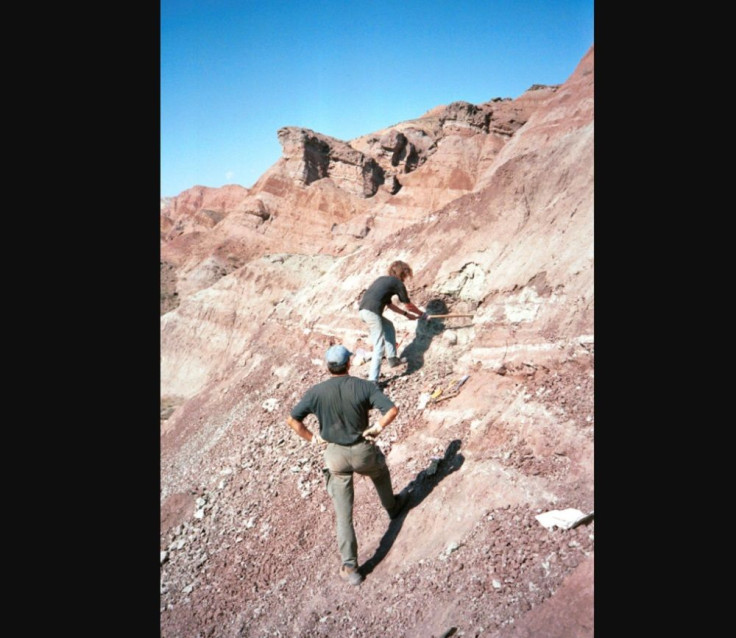Bite Marks On Dinosaur Bone Present Evidence Of Dinosaur-Eating Mammal
KEY POINTS
- Researchers recovered a dinosaur bone in China that had bite marks from a tiny mammal
- It is the oldest known mammal teeth mark on dinosaur bone
- This is the earliest evidence of mammals eating dinosaur meat
Researchers found evidence of a tiny mammal eating a dinosaur. It is the oldest known mammal toothmarks on a dinosaur bone that is 160-million years old.
People are used to the image of massive dinosaurs eating other animals and even other dinosaurs but, mammals, especially small ones, eating dinosaurs may sound peculiar to some. In a new study published in The Science of Nature, a research team found evidence of a shrew-sized mammal eating a large dinosaur, thanks to a bone that was recovered from the Junggar Basin in northwestern China.
The team found the bite marks on the cervical rib bone of a long-necked dinosaur that would have been approximately 20 meters long and weighed several tons. By comparison, the early mammals were much smaller, averaging only 100 grams in weight. Most modern shrews, which researchers used to compare the size of the mammal that left the bite marks on the dinosaur bone, average only two to three inches in length and 14 grams in weight, according to Britannica.
The researchers said the tiny mammals were likely feeding on the remains of a dinosaur that had died, as it was the only way for such small creatures to feed on the giants. Further, because of the vast difference in size between the creatures, researchers believe they only ate one animal.
"The marks provide valuable insights into the biology of these early mammals from China, which according to the reconstructions were very small insectivorous or omnivorous animals. We were able to prove for the first time that they were not above eating carrion," study lead professor Hans-Ulrich Pfretzschner of the Department of Geosciences at the University of Tübingen said in a news release.
The discovery is, so far, the oldest direct evidence of mammals feeding on dinosaurs, making it quite exceptional.
"Direct evidence such as bite marks on bones or stomach contents is very rare," study first author Felix Augustin, also from the University of Tübingen, said. "Furthermore, all the evidence we have to date dates back to the Cretaceous period at the earliest and is at most about 100 million years old. That's why our discovery from about 160 million years ago is so special."
Today, modern shrews are comprised of over 350 insectivore species that use their large incisor teeth to grab their prey.

© Copyright IBTimes 2024. All rights reserved.






















